#chicago imagists
Explore tagged Tumblr posts
Text

Robert Lostutter — M50 (oil on canvas, 1971)
108 notes
·
View notes
Text

Karl Wirsum (1939-2021) Cough, c. 1962-63 Oil on canvas, 20 x 20 inches
#karl wirsum#wirsum#chicago imagists#hairy who#jim nutt#gladys nilsson#contemporary artist#paintings#fine art#art#contemporary art#painting#artwork#oil painting#oil on canvas#artists#artist#artists on tumblr#art of the day#art on tumblr#cough#1960s art#chicago artist#contemporary painter#contemporary painting
21 notes
·
View notes
Text

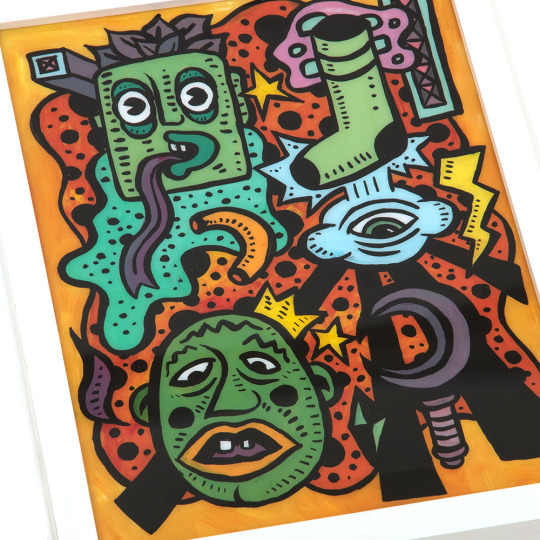
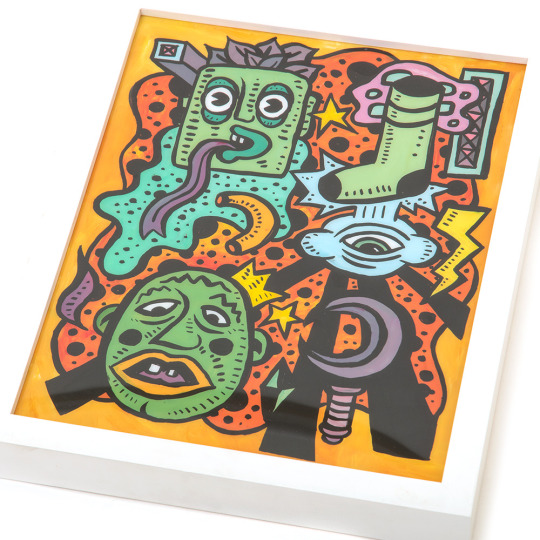
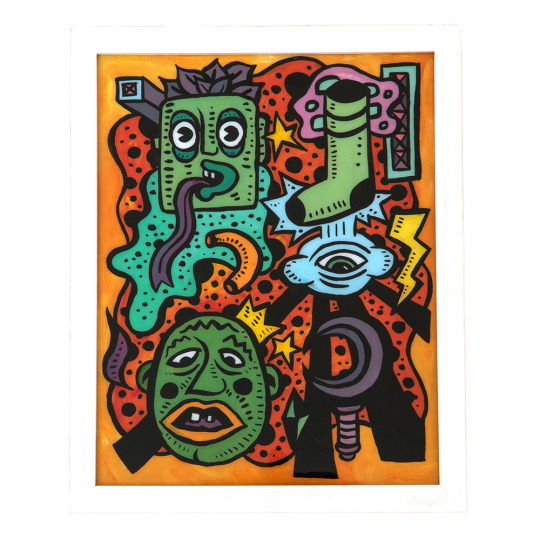
Cosmic Vomit
#artists on tumblr#trippy#grunge#dark art#illustration#macaroni#cartoon#graffittiart#mixed media#acryliquepainting#cute faces#my artwork#surrealism#chicago imagists
19 notes
·
View notes
Video
youtube
(via (48) Hairy Who - 1966-69 - Jim Falconer, Art Green, Gladys Nilsson, Jim Nutt, Suellen Rocca, Karl Wirsum - YouTube)
0 notes
Text

Karl Wirsum
1 note
·
View note
Text

Ed Paschke, Mid American, 1969, oil/canvas (Art Institute, Chicago)
4 notes
·
View notes
Text

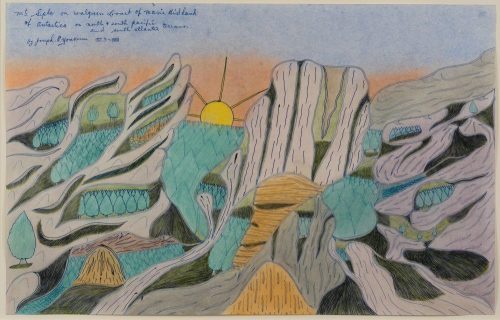
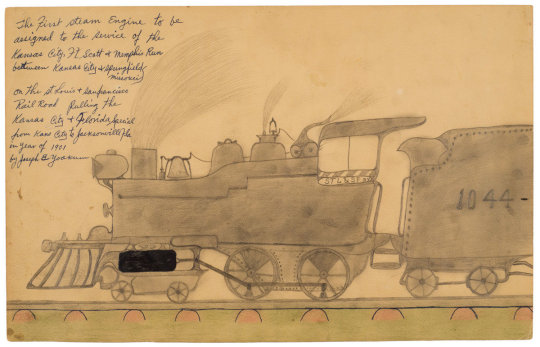
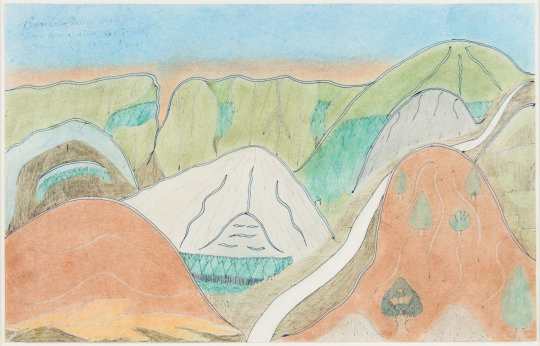
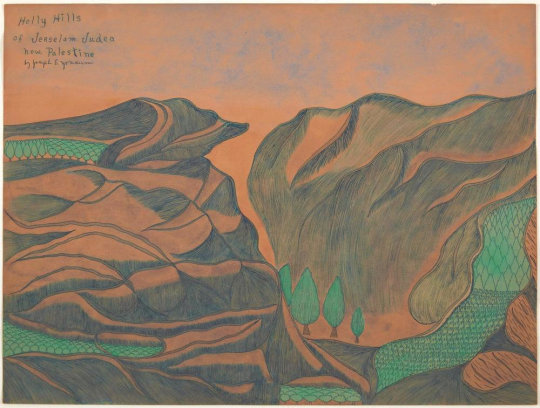
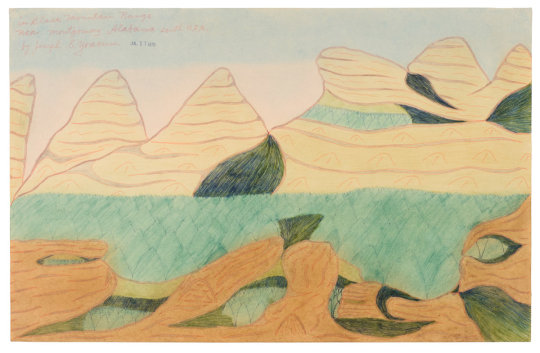
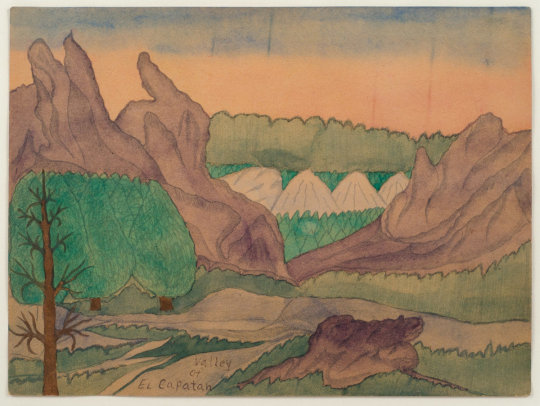
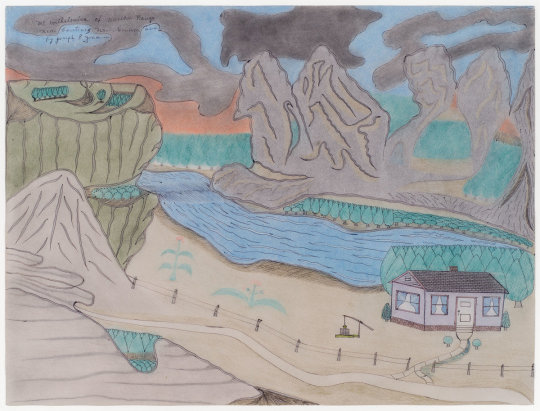
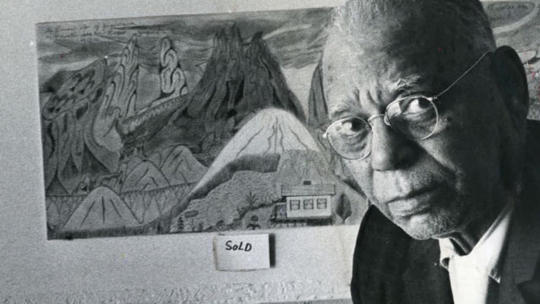
Joseph Yoakum, Cherokee, c. 1890–1972, born in Ash Grove, MO; d. Chicago, IL
Joseph Yoakum, of Cherokee, African-American, and French-American ancestry, began drawing his fantastical landscapes while living in Chicago in his later years. He claimed the locations were drawn from memories of his time spent in numerous circuses as a youth, as a soldier serving with the U.S. Army during World War I in Europe, as a vagabond rail rider, and as a stowaway and stevedore in Asia and Australia. He settled in Chicago in the late 1920s, but did not begin drawing his animated recollections until 1962. It was the 1960s Chicago Imagists who were among the first to herald him.
19 notes
·
View notes
Text
📝
I find myself contemplating the need for a more candid discourse within the realm of the arts concerning the pervasive racial lens through which all creative endeavors are filtered. It is disconcerting to observe a distinct dichotomy wherein white artists, predominantly cisgender men, are lauded for producing diminutive or miniature works that effortlessly earn the accolade of "fine art." In stark contrast, Black artists are compelled to generate monumental or consistently large-scale pieces to garner recognition within the same artistic echelons or to elicit sales and museum acquisitions.
The art world seems to perpetuate a prejudiced expectation that the merit of Black artists is contingent upon the size of their creations, a sentiment I find disheartening and emblematic of an entrenched anti-Black bias. This bias, both overtly acknowledged within art circles and insidiously prevalent beyond those confines, remains tethered to a dated ethos that champions the maxim "big is good," a mantra solidified by the white-dominated Pop Art movement of the 1960s and further entrenched in the 1980s on both sides of the Atlantic.
I distinctly recall challenging the work of Zac Segbedzi in the past, a body of work that, in my estimation, lacks a profound engagement with global anti-Blackness. While his technical proficiency and the amalgamation of kiki and bouba rendering styles are commendable, the essence of his figuration often relies on shock value, reminiscent of the Chicago Imagists and also devoid of a substantial exploration of the experiences of the most marginalized. If one endeavors to create "political paintings," they ought to transcend mere visual intrigue and actively confront systems of oppression, rather than merely adorn the cover of a bygone Vice Magazine.
In critiquing my own work, reminiscent of Beauford Delaney's cityscapes or group compositions, rendered in acrylic instead of oil due to the material's reduced toxicity and my financial constraints at the time, Zac dismissed them summarily as "bedroom paintings." This unwarranted dismissal, grounded in the size limitations of my studio space, exposed how race subtly dictates the perception of art objects. White artists, I noted, often share similar size restrictions or proudly boast about creating in confined spaces without facing the same unwarranted criticism.
This experience solidified my conviction that racial biases extend even to the physical dimensions of artistic expression. Unless Black artists conform to standards rooted in Greco-Roman traditions or the white art world's definition of "realism," their work is relegated to a category deemed less than "fine art." While exceptions exist, they often entail exploitative dynamics, exemplified by the plight of Gee's Bend Quilters or Marlon Mullen, underscoring the persistent material disparities faced by Black artists.
The prevailing consumer slogan, "Size Matters," holds unfortunate resonance within the arts, perpetuating a system that undervalues the artistic contributions of Black creators. Artists such as Trystan Williams (I strongly believe the work is boneless or gentrified Tony Cokes), seemingly appropriating text without due consideration, evoke a colonialist mentality akin to Mount Rushmore, an unsavory aspect that warrants reflection. The discrepancy in recognition between white artists engaging in found object art and their Black counterparts further underscores the systemic inequities within the art world.
Moreover, the prevalence of text or word art as a trend in the arts invariably leads to the erasure of Black artists working in this domain. The dearth of literature on Black word artists underscores the need for a concerted effort to rectify this oversight, perhaps through curated exhibitions or publications. The majority of white word art, I observe, tends towards self-indulgent self-flagellation, starkly contrasted with a reticence to engage in works addressing systemic issues like anti-Blackness.
In conclusion, the contemporary artistic landscape reveals a persistent imbalance in the treatment of Black and white artists, not only in terms of subject matter and technique but also in the often-overlooked dimension of physical scale. Urgent introspection is warranted, accompanied by a collective commitment to dismantle the deeply ingrained racial biases that pervade the art world.
5 notes
·
View notes
Text
Dudi Berkowitz’s Chicago artistry book for being introduced in drop 2023
Chicago has long been considered a hub for creativeness, and for a lot of artists, it's a location of inspiration, progress, and possibility. Now, Chicago-based artist Dudi Berkowitz is set to release a fresh book that celebrates the city's loaded inventive heritage and also the a lot of approaches by which it's affected the art earth.
Berkowitz's book, "Chicago Artistry," is ready to get produced in fall 2023. The 150 website page book will function an array of illustrations and artwork, and also personal stories and reflections from your artist about his experiences in Chicago.
One of several important themes of "Chicago Artistry" may be the city's influence on the arts. Through the entire book, Berkowitz explores how Chicago has played a task in shaping the artwork globe, within the iconic functions from the Chicago Imagists to your groundbreaking architecture that dots the city's skyline.

But "Chicago Artistry" is not only a book about Dudi Berkowitz Chicago partnership with Chicago's artistic previous. He's also considering highlighting the city's vibrant arts scene currently, having a individual concentrate over the several parks and environmentally friendly spaces that provide inspiration to artists throughout the Chicagoland location.
In fact, among the list of central chapters with the book is devoted to discovering many of the most inspirational parks while in the metropolis, from Lincoln Park to Millennium Park and past. Via a combination of stunning illustrations and personal anecdotes, Berkowitz showcases how these inexperienced areas have encouraged generations of artists, musicians and writers.
A further important component of "Chicago Artistry" is its concentration to the several famous monuments and landmarks that outline the city. With the colossal Willis Tower on the iconic Cloud Gate sculpture, Berkowitz's book incorporates a prosperity of illustrations and insights into a few of the city's most beloved landmarks.
In the course of "Chicago Artistry," Berkowitz showcases his own unique model and viewpoint as an artist. Recognized for his vivid, colourful artwork, Berkowitz brings a fresh new and modern day point of view towards the city's abundant artistic heritage.
Certainly, Berkowitz isn't the very first artist being encouraged by Chicago and positively will not be the last. From the early days with the Chicago Faculty type of architecture towards the up to date performs of artists like Theaster Gates and Kerry James Marshall, town has long been a hotbed of creative imagination and innovation.
But with "Chicago Artistry," Berkowitz provides a fresh and remarkable take on the city's art scene, one that is certain to inspire both of those longtime Chicagoans and newcomers alike. No matter if you're an artist trying to find inspiration, a vacationer aiming to investigate the city's loaded cultural heritage, or just somebody who enjoys art and needs to discover much more about Chicago's function while in the art planet, "Chicago Artistry" is definitely the study to suit your needs.
And which has a launch day set for fall 2023, there's in no way been a much better time and energy to start off having psyched about this publication. With its stunning artwork, insightful commentary and heartfelt reflections over the electric power of artwork and creativity, "Chicago Artistry" is bound to be a beloved traditional amongst art enthusiasts and Chicagoans alike.
2 notes
·
View notes
Text

Roger Brown (1941-1997) — Suburbs View [oil on canvas, 1972]
441 notes
·
View notes
Text


Wowidow. Jim Nutt (1968).
Youdue. Karl Wirsum (1966).
Hairy Who? 1966-1969 Exhibition.
Art Institute of Chicago.
#art inspo#trippy#art i like#art museum#reverse painting#art institute of chicago#mixed media#weird art#chicago imagists#not my art#contemporaryart#modern painting
7 notes
·
View notes
Text
Art Odyssey: Explore the World's 7 Best Exhibitions!
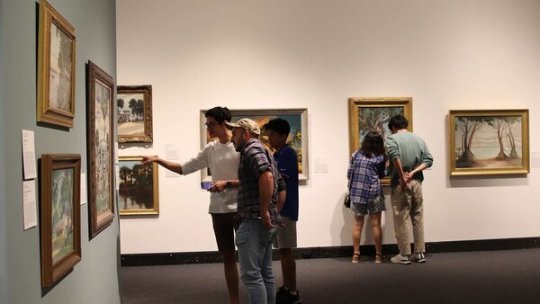
Embark on an artistic journey through 2024's most exciting exhibitions! Dive into immersive retrospectives and thought-provoking thematic explorations. Discover groundbreaking works and intriguing themes across continents. Join us for an unforgettable adventure in the world of contemporary art! M.F. Husain: The Rooted Nomad Where: Magazzini del Sale, Venice When: April 18 – November 24 Explore the captivating life and artistry of M.F. Husain, a trailblazer of Indian modernism, in this immersive exhibition running parallel to the Venice Biennale. Supported by prominent art collector Kiran Nadar, delve into Husain's innovative works that transcend cultural boundaries and explore themes of exile and identity. Website: The Rooted Nomad Christina Ramberg: A Retrospective Where: The Art Institute, Chicago When: April 20 – August 11 Christina Ramberg: A Retrospective at The Art Institute, Chicago Experience the groundbreaking art of Christina Ramberg, a key figure of the Chicago Imagists movement, in her first major retrospective in over three decades. Delve into Ramberg's thought-provoking paintings, which challenge societal norms and offer poignant reflections on femininity and power. Website: Christina Ramberg Anna Park: Look, Look Where: Art Gallery of Western Australia, Perth When: April 20 – September 8 Anna Park: Look, Look at Art Gallery of Western Australia, Perth Uncover the thought-provoking commentary on media and reality in Anna Park's mesmerizing black-and-white drawings. Through her satirical style, Park sheds light on the illusions of fame and perception in contemporary culture, inviting viewers to question the narratives presented by the media. Website: Anna Park Figures on Earth & Beyond Where: Gallery 1957, London and Accra When: Through May 25 (London), late 2024 (Accra) Figures on Earth & Beyond at Gallery 1957, London and Accra Embark on a journey of interconnectedness with a diverse group of artists exploring themes of nature, belonging, and ecological change. From surreal collages to abstract cartographies, immerse yourself in artworks that challenge perspectives and evoke wonderment. Website: Figures on Earth & Beyond Thomas Nozkowski: Everything in the World Where: Pace Gallery, Manhattan When: Through April 20 Thomas Nozkowski: Everything in the World at Pace Gallery, Manhattan Celebrate the influential legacy of Thomas Nozkowski through a retrospective of his remarkable career. Explore his intimate yet powerful paintings, which defy artistic conventions and invite viewers to explore the depths of personal experience and perception. Website: Thomas Nozkowski The Last Caravaggio Where: National Gallery When: April 18 – July 21 Experience the dramatic works of Caravaggio in his possibly final masterpiece, "The Martyrdom of Saint Ursula." Immerse yourself in a world of darkness, violence, and passion in this captivating display of Renaissance artistry. Website: The Last Caravaggio Marina Abramović Retrospective Where: Stedelijk Museum When: March 16 – July 14 Marina Abramović Retrospective at Stedelijk Museum Journey through five decades of groundbreaking performance art with Marina Abramović's retrospective at the Stedelijk Museum. Engage with iconic works and live reperformances, offering a unique opportunity to participate in the transformative power of performance art. Website: Marina Abramović Read the full article
0 notes
Photo

Karl Wirsum
1 note
·
View note